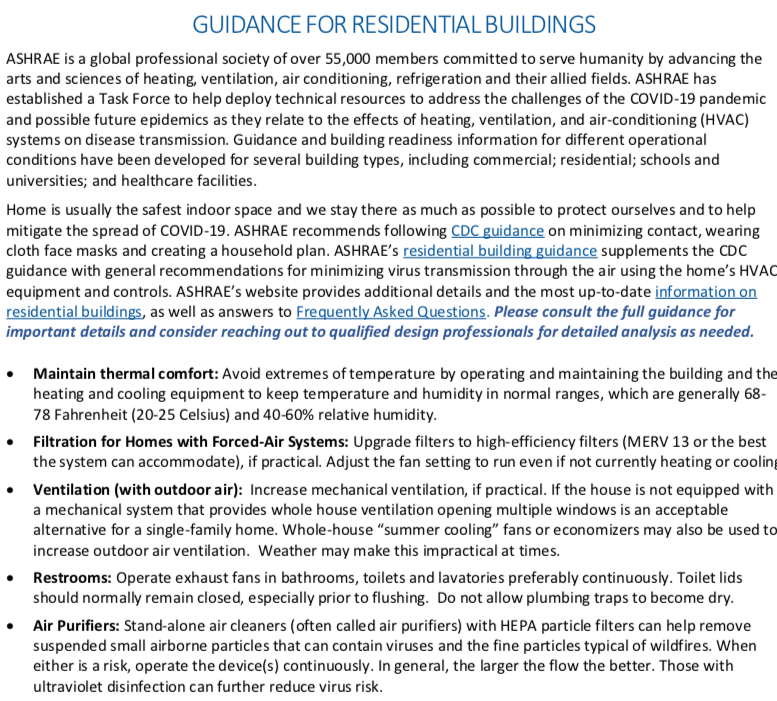Airborne Virus Risk Reduction
ASHRAE Recommendations for Residential Risk Reduction
The link below shows the guidance developed by the ASHRAE Epidemic Task Force for risk reduction in homes and apartments. To make a (very) long story short: get as many portable HEPA air cleaners as you can afford, and run them continuously in the space—on low speed—whenever interaction with potentially-infected people is a practical necessity.
Lesson Learned About Airborne Risk Reduction
With more than one million deaths in the US alone and trillions of dollars in lost income and increased healthcare costs, the COVID-19 pandemic is a truly global catastrophe. Meaningful risk reduction demands vaccination and reducing exposure by reducing indoor occupant density and wearing masks indoors. Without those measures, efforts to reduce risks through HVAC improvements have shown little effectiveness.
That said, as long as vaccination and masks are in place, building occupants and managers can further reduce risks though ventilation and filtration. The ASHRAE Journal article describes the lessons learned by building researchers and engineers through efforts to mitigate the risks of COVID-19 though the use of portable HEPA filters and building HVAC system improvements.
Real-world Validation - Portable HEPA Air Filters reduce COVID-19 infection risks
There has been much misunderstanding debate in public forums about the effectiveness of portable air cleaners in reducing COVID-19 risks. But the peer-reviewed evidence is conclusive: portable HEPA air cleaners not only airborne particulate, but they also reduce the amount of viral material in the air in real-world buildings and rooms. This journal article is one of more than a dozen studies that establish the effectiveness of portable air cleaners in reducing airborne infection risks (provided the units are actually operating in the occupied space, and provided there are enough portables in a large space to make a difference!)



